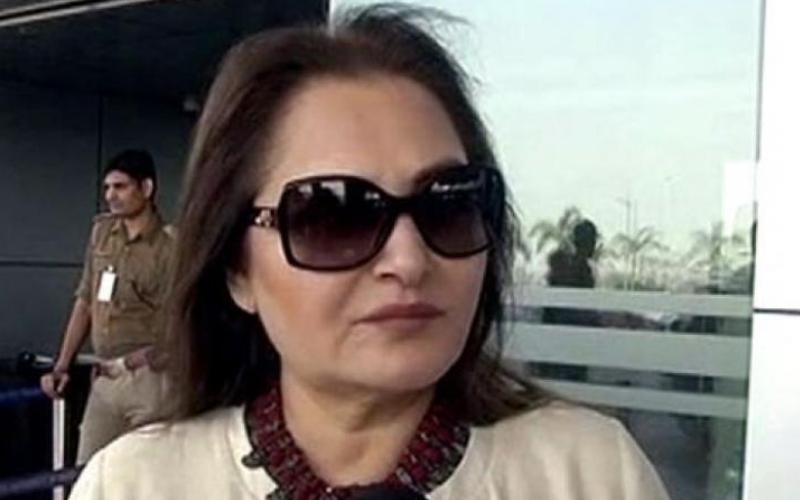Mumbai: What would Jaya Pradas film long and fruitful innings as an actor have been if Sridevi was not around? Throughout her career, and not just in Hindi films but also in Tamil and Telugu, Jaya Prada was pitched against the much-missed iconic Sridevi and found to be lacking…in what, one cant say.
Because Jaya Prada could dance as well as Sridevi, and Jaya also had the classic chiseled features of a perfectly carved Durga idol which prompted Satyajit Ray to call out Jaya’s exquisite face as one of the most beautiful he had ever seen. Jaya could have been another Waheeda Rehman. But she always wore a mask…and I don’t mean just the garish makeup which hid her immaculate features.
There is always a sense of incompletness in Jaya Prada’s performances. As though her aspirations were constantly stopped by distractions.
Somehow, Jaya never reached the zenith that her all-round combination of talent beauty and grace promised. Starting out in Telugu cinema in 1974 she quickly garnered a reputation for being both saleable and assailable with blockbuster films “Manmatha Leelai” and “Seetha Kalyanam”. Renowned directors like K. Balachander, K. Vishwanath and Bapu cast her repeatedly.
“There’s something very pure very graceful and poised about Jaya Prada,” Bapu had once raved. Unknowingly he pinned down the lack oomph in her personality that all female superstars are known to possess.
When Jaya Prada moved to Hindi cinema she was an instant hit in the underrated blockbuster “Sargam”. The film and its songs were super-hits. And Jaya Prada was soon approached by every major filmmaker in Mumbai.
However, “Sargam” remained her career’s highest point in Hindi. Sadly Jaya Prada’s most ambitious film, “Sur Sangam”, a striking spectacular homage to Indian classical dance and music sank without a trace. The Telugu version of the same film was a game-changer in Andhra Pradesh. Hindi cinema didn’t seem to respect her virtuous personality. Jaya Prada was heartbroken, as she was quickly typecast as the typical long-suffering Sita-reincarnated wife in forgettable family dramas produced in the South with street-side arrow-pointers like “Swarg Se Sundar” and “Ghar Ek Mandir” as titles.
A very successful leading man of the 1970 and 1980s who worked with both Sridevi and Jaya Prada compared the two rather ebulliently. “Jaya was more the domesticated wifely type while Sridevi could be anything she wanted. Jaya was restricted and typecast.”
The constant comparisons with Sridevi soon got to her and her career. A string of Amitabh Bachchan starrers in the 1980s, where she had little to do except wait while the hero fought all odds, including the mega-hit “Sharaabi” only reiterated Jaya Prada’s beautiful-but-dull image. She soon gravitated to politics where she found a mentor and guiding force in Amar Singh, then a top honcho in the Samajwadi Party, but not without a hiccup.
She initially joined the Telugu Desam Party (TDP) in 1994 at the invitation of founder and former chief minister N.T. Rama Rao.
After N. Chandrababu Naidu led a revolt against his father-in-law NTR and took over the reins of the government and the party in 1995, she backed the Naidu camp.
Naidu made her the president of Telugu Mahila, the women’s wing of the TDP and also nominated her to Rajya Sabha. When she was denied a second term in 2002, she distanced herself from the party and moved to Uttar Pradesh to join the Samajwadi Party at of Amar Singh’s invitation.
In 2004, Jaya Prada was elected to the Lok Sabha from Rampur, a seat which she retained in 2009.
A year later, then Samajwadi Party president Mulayam Singh Yadav expelled her and Amar Singh for anti-party activities.
Amar Singh and Jaya Prada then floated a new political outfit – Rashtriya Lok Manch – in 2011 but it came a cropper in the Uttar Pradesh Assembly elections held a year later.
Since then, she had been living in political oblivion. On few occasion, she dropped hints of making a comeback to Andhra Pradesh politics.
“My heart and soul are always with the people of my home state,” she had said. There were indications that she may come back to The TDP. YSR Congress Party had also sent her the feelers – but on Tuesday, she chose otherwise by joining the BJP.
In sum, Jaya Prada never relinquished cinema. It was more the way Hindi cinema could never properly fit Jaya in. This applies to politics also, where she always seems a little uncomfortable as though caught in the boogie of an express train.
What she lacked in her film career was a guiding force like Sridevi’s husband Boney Kapoor. Jaya’s scandalous marriage to the already-married producer, Srikanth Nahata, in 1986, plummeted her stock in Bollywood even further.
I remember sitting with Manmohan Desai in his office when news of Jaya Prada’s marriage came in.
“Oh damn, why did she have to get married? Now she will get pregnant,” Desai couldn’t hold back his anger.
He was worried about his Bachchan-Prada starrer “Ganga Jamuna Saraswati” that on release was an ambitious flop. Jaya Prada was never lucky in love or career. Let’s hope the change to saffron will bolster her so-far bleak innings.
[source_without_link]IANS[/source_without_link]

